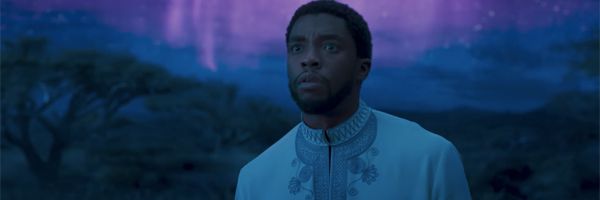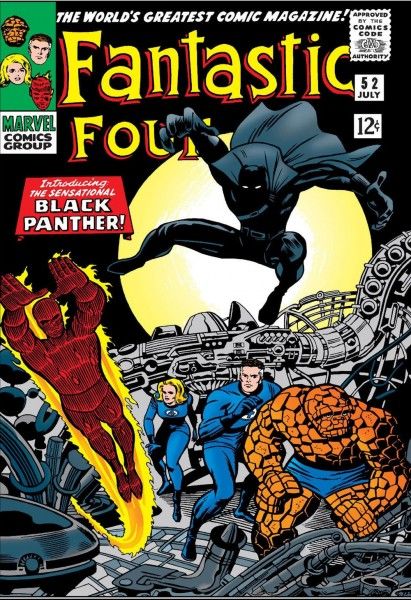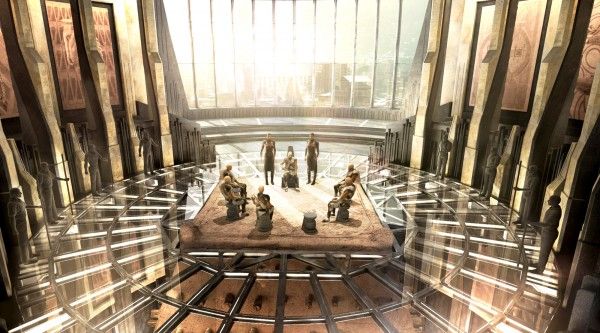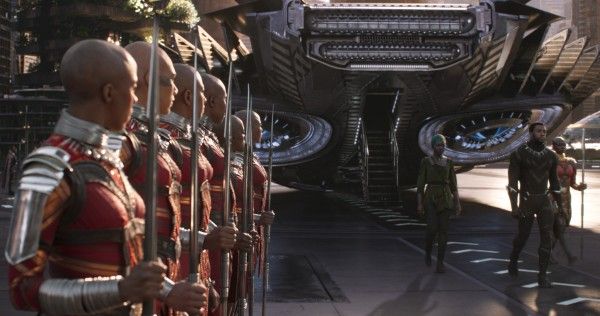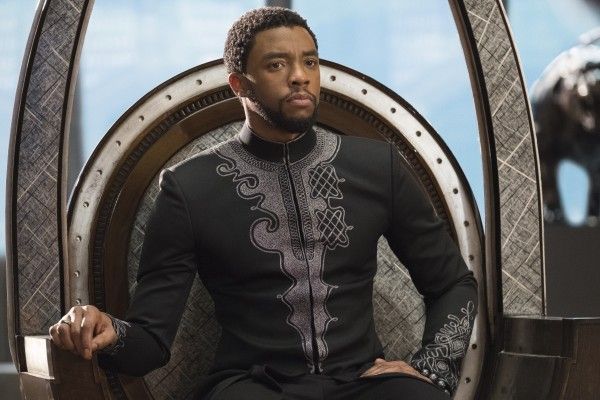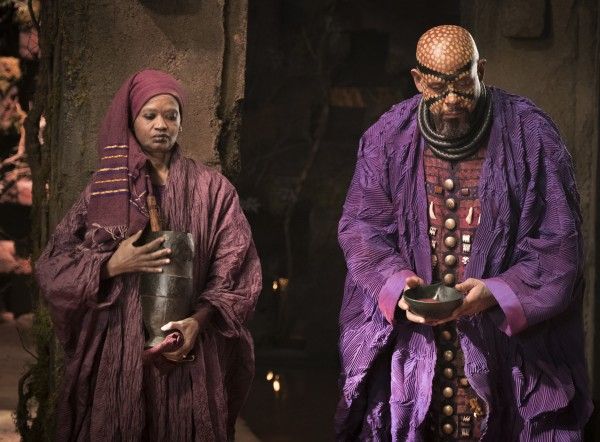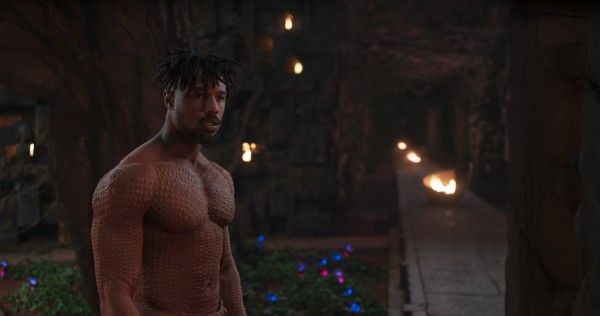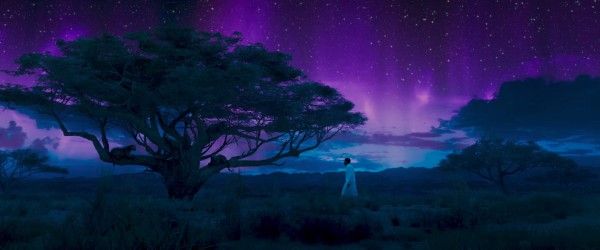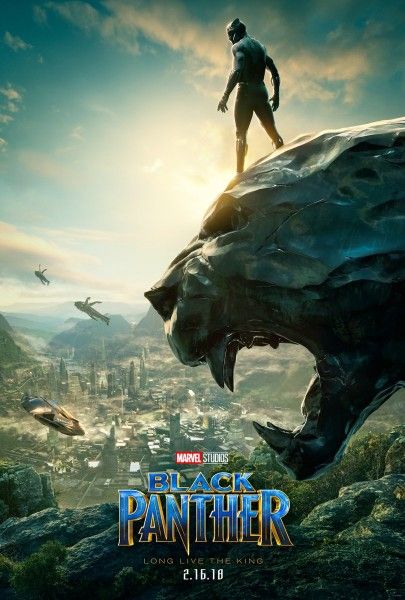Spoilers ahead for Black Panther.
One thing a lot of die-hard Marvel Comics fans were looking forward to seeing on the big screen in Ryan Coogler's Black Panther adaptation is the more mythical side of Wakanda. Yes, the hidden nation owes most of its technological prowess, power, and prestige to the rare metal vibranium that exists solely within their protected borders, but it might surprise you to learn that the meteoric material also carries a lot of influence when it comes to Wakandan mythology and religious practices. The Marvel movie went to great lengths to explore both the futuristic, cutting-edge side of Wakanda as well as the nation's traditional and tribal roots, which often come into conflict with each other.
And then there's the lore surrounding the myth-made-manifest hero himself, the Black Panther. There's much more to this character than a high-tech suit and an intimidating mask, more still than a lifetime's worth of training and combat. Much like Steve Rogers' heroic heart made him the perfect candidate for the Super-Soldier project, and how Tony Stark's innate genius allowed him to craft his incredible array of armor, so too does the reigning Black Panther have to prove himself (or herself) worthy of the mantle, along with surviving the ritual of the Heart-Shaped Herb.
That's such an evocative description, isn't it? The Heart-Shaped Herb, originally appearing in a Fantastic Four comic featuring the Black Panther back in 1966, is a plant that only exists in Wakanda. Now that might sound like a coincidence, especially since the incredibly rare vibranium also only exists in the nation, but the two are intertwined. Long thought by the people of Wakanda to be a gift from the Panther God Bast, the Heart-Shaped Herb has been found to be a plant mutated by the meteorite of vibranium that landed in Wakanda. (The intro to Black Panther lays this meteorological history out for the audience, though the plant's effects are saved for later scenes.) This is a great example of the meeting point between the mythology and technology in the story, but it's also central to Black Panther's powers.
In addition to surviving trial by combat in order to become the Black Panther, the warrior of royal and noble blood must complete a number of other trials to prove their worth. Should they be successful, their body is treated to a poultice made of the Heart-Shaped Herb; in the movie, the plant was made into a concoction that was consumed before the candidate was, essentially, buried alive in order to go on a vision quest. This process, if the candidate survives it, grants incredible powers of enhanced speed, agility, strength, endurance, healing, and sensory perception on the level of a Super Soldier; it also grants the ability to see in the dark, hear a person's heartbeat, and track by scent. Scientifically, the Heart-Shaped Herb has been found to improve the subject's kinesthetic sense, a sense that allows you to know your location in space and move accordingly; basically this amounts to superior control over your own body.
T'Challa clearly consumed the Heart-Shaped Herb in order to gain his incredible powers, powers which were stripped from him (and returned) twice in the movie in order to level the playing field against his challengers for the thrown. However, T'Challa's not the only character to consume the herb in the comics. His sister Shuri, temporarily found unworthy of the plant's gifts, eventually became enhanced through its properties. Another more obviously unworthy character by the name of Erik Killmonger attempted to consume the herb and nearly died from the experience; the movie seemed to do away with this more magical angle of being "unworthy", though it was a nice touch to include Killmonger's order to burn the remaining plants and prevent would-be challengers from gaining their powers. In the comics, Killmonger later concocted a synthetic version of the herb that granted similar abilities. With all of the Heart-Shaped Herbs presumably destroyed, perhaps Shuri will take on this challenge in the future; it would go a long way towards her potential origin as the Black Panther herself.
Production Designer Hannah Beachler also spoke about how her design for The City of the Dead ties into the Black Panther mythology:
“We wanted to bring in this idea of Angkor Wat. We wanted to bring in this sort of like very low-tech, a lot of fire. You really see that’s where all our ancestors are. You see a lot of masks, all the panther masks, and you see how they do a lot of their rituals as far as the heart-shaped herb, which you will see, and it will be fabulous and wonderful. [Laughs] And then also the dream states that he goes into when he meets the ancestors.”
Did you like how Black Panther handled the mythology of the Panther Gods, vision quests, meeting the ancestors, and the Heart-Shaped Herb? Let us know in the comments!
For much more of our coverage on Black Panther, be sure to check out these recent write-ups and keep an eye out for much more to come:
- Weekend Box Office: 'Black Panther' Ascends to the Throne with $192 Million
- 'Black Panther' Spoiler Review: The Spirit of Wakanda, the Body of Marvel
- ‘Black Panther’: Andy Serkis on Klaw’s Return & the Mercenary’s Conflict with Wakanda
- ‘Black Panther’ and Wakanda’s Dogs of War: The Hatut Zeraze Explained
- ‘Black Panther’: 90 Things to Know about the MCU’s Game-Changing Movie

